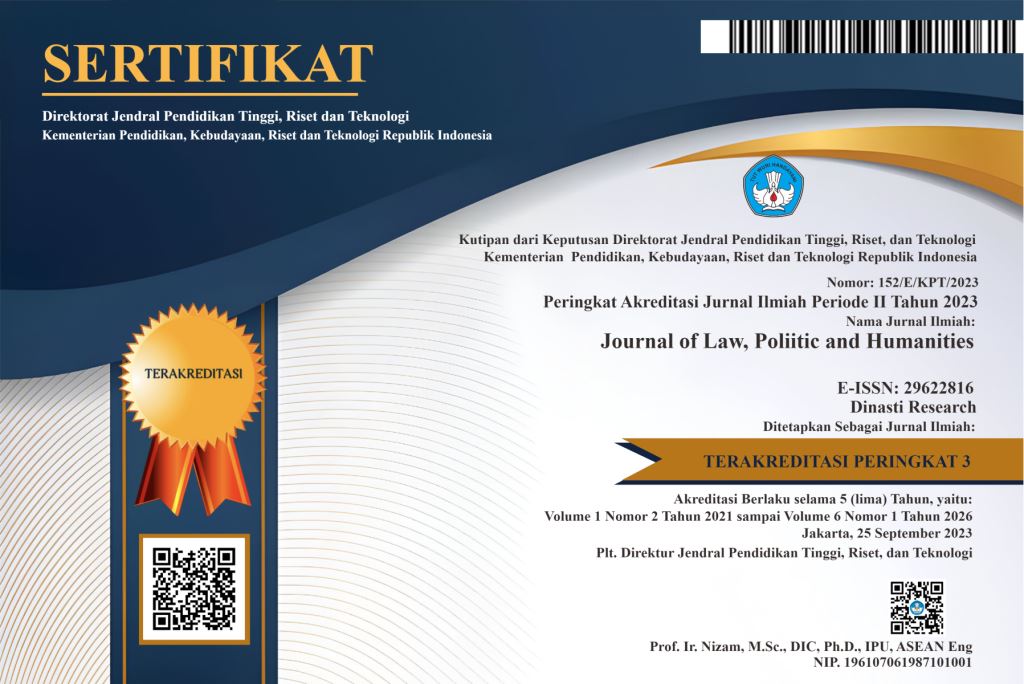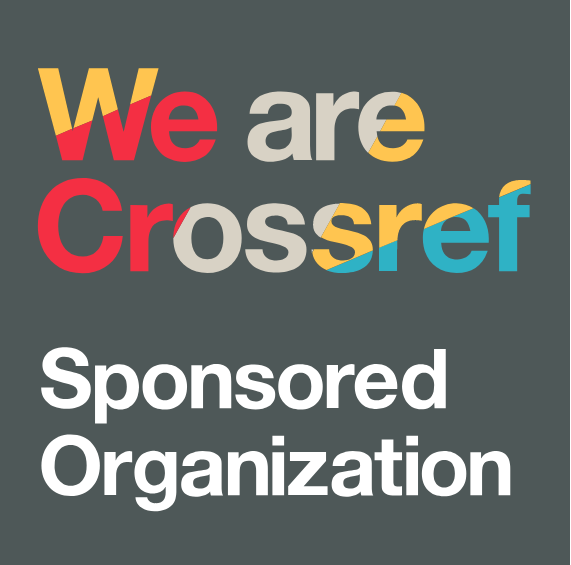The Liability of Cosmetics Business Operators For The Impact of Hazardous Product: Pinkflash Cosmetics Brand on Consumers
DOI:
https://doi.org/10.38035/jlph.v6i1.2621Keywords:
Consumer Protection Act, Legal Liability, Indonesian Cosmetics LawAbstract
Consumer protection in the cosmetics industry is a very important aspect in realizing justice, safety, and legal certainty, especially when dangerous products can threaten public health. This article aims to analyze the legal responsibilities of cosmetics businesses and the legal protection provided to consumers in the case of Pinkflash products containing dangerous ingredients such as mercury and hydroquinone. The research method used is normative legal research with a legislative, conceptual, and case approach. The results show that cosmetic businesses bear civil, criminal, and administrative legal responsibility, including the obligation to compensate consumers, criminal sanctions in the form of imprisonment and fines, and administrative sanctions in the form of product recalls and revocation of distribution permits by the Indonesian Food and Drug Administration (BPOM). Legal protection for consumers is carried out preventively through product supervision and distribution permits, as well as repressively through the application of the principle of strict liability, legal sanctions, and dispute resolution through the Consumer Dispute Settlement Agency (BPSK). Although the legal framework in Indonesia is comprehensive, its implementation is still weak due to a lack of post-distribution supervision and low consumer awareness. Therefore, improved coordination between institutions and public education are needed to achieve effective consumer protection.
References
Apriliani, R. (2024). Ini Klarifikasi Pinkflash Usai 3 Produknya Dinyatakan Berbahaya oleh BPOM RI. Beautynesia. https://www.beautynesia.id/beauty/ini-klarifikasi-pinkflash-usai-3-produknya-dinyatakan-berbahaya-oleh-bpom-ri/b-298219
Azhara, & Khasanah, N. (2021). Waspada Bahaya Kosmetik: Tuntunan Cerdas Mengenal Dampak-Dampak Negatif Penggunaan Zat Kimia Berbahaya dalam Kosmetik Anda. Yogyakarta: Deepublish.
Erlinawati, M., & Nugrahaningsih, W. (2017). Implementasi Undang-undang Nomor 8 Tahun 1999 Tentang Perlindungan Konsumen terhadap Bisnis Online. 11(1), 27-40. https://www.neliti.com/publications/163571/implementasi-undang-undang-nomor-8-tahun-1999-tentang-perlindungan-konsumen-terh#cite
Fil’ Awalin, H. (2025). Consumer Legal Protection for Overclaimed Skincare Products. Delega Lata: Jurnal Ilmu Hukum, 10(1), 32-39. https://doi.org/10.30596/dll.v10i1.22493
Gautama, W. R. (2024). 3 Produk Pinkflash yang Ditarik BPOM karena Mengandung Bahan Berbahaya. Suara.com. https://www.suara.com/lifestyle/2024/12/03/081000/3-produk-pinkflash-yang-ditarik-bpom-karena-mengandung-bahan-berbahaya
Indonesian Civil Code (Kitab Undang-Undang Hukum Perdata)
Karolina, G. A., Priyanto, M. D., & Sumadi, P. S. (2021). Perlindungan Hukum Terhadap Konsumen Pengguna Kosmetik Berbahaya. Kertha Semaya : Journal Ilmu Hukum, 9(12), 2352-2365. doi:https://doi.org/10.24843/KS.2021.v09.i12.p08.
Kusumadewi, Y., & Sharon, G. (2022). Hukum Perlindungan Konsumen. Yogyakarta: Lembaga Fatimah Azzahrah. https://repository.unkris.ac.id/id/eprint/2234/1/9786239796983.pdf
Lestari, E. (2015). Pertanggungjawaban Pidana Bagi Pelaku Usaha yang Menjual Kosmetik Pemutih Wajah yang Mengandung Bahan Kimia Berbahaya (Studi di Bbpom Surabaya). Jurnal Mahasiswa Fakultas Hukum Universitas Brawijaya. https://www.neliti.com/publications/35378/pertanggungjawaban-pidana-bagi-pelaku-usaha-yang-menjual-kosmetik-pemutih-wajah#cite
Law Number 8 of 1999 on Consumer Rights
Law Number 11 of 2008 on Electronic Information and Transactions
Law Number 17 of 2023 on Health
Magfirah, & Dwi, E. (2009). Perlindungan Konsumen Dalam E-Commerce. Jakarta: Grafikatama Jaya.
Panjaitan, H. (2021). Hukum Perlindungan Konsumen. Jala Permata Aksara.
Perlindungan Hukum bagi Konsumen Terkait Klaim Berlebihan (overclaim) Pelaku Usaha Skincare pada Media Sosial Tiktok HUkum Bagi Konsumen Terkait Klaim Berlebihan (Overclaim) Pelaku Usaha Skincare pada Media Sosial Tiktok. (2025). E-Journal Fatwa Hukum FACULTY OF LAW, 8(3). https://jurnal.untan.ac.id/index.php/jfh/article/view/99087.
Regulation of the National Agency of Drug and Food Control (BPOM) No. 23 of 2019 concerning Technical Requirements for Cosmetic Ingredients
Regulation of the National Agency of Drug and Food Control (BPOM) No. 12 of 2020 concerning the Procedure for Supervising Cosmetics Distributed Online
Regulation of the National Agency of Drug and Food Control (BPOM) No. 12 of 2023 concerning the Supervision of the Manufacture and Circulation of Cosmetics
Rihi, M. G., Hedewata, A., & Pello, H. F. (2024). Alasan Konsumen Tidak Mengadukan Kasusnya serta Bentuk Perlindungan Konsumen Akibat Kosmetik yang Berbahaya Berdasarkan Undang-Undang Nomor 8 Tahun 1999 tentang Perlindungan Konsumen. Aliansi: Jurnal Hukum, Pendidikan Dan Sosial Humaniora, 1(6), 117–135. https://doi.org/10.62383/aliansi.v1i6.557
Sari, S. A., Djumadi, D., & Zakiyah, Z. (2023). Tanggung Gugat Atas Produk Kosmetik Yang Ditarik Bpom Karena Mengandung Zat Berbahaya. Lex Positivis, 1(3). https://jtamfh.ulm.ac.id/index.php/jtamfh/article/view/56
Sembiring, S., & Pratama, B. P. (2022). Perlindungan Terhadap Konsumen Kosmetik Ilegal Yang Mengandung Zat Berbahaya. Jurnal Ilmiah Ekotrans & Erudisi, 2(1), 83-87. https://doi.org/10.69989/rxjpk348
Shidarta. (2006). Hukum Perlindungan Konsumen Indonesia. Jakarta: Grasindo.
Siaran Pers. (2023, March 16). Siaran Pers | Badan Pengawas Obat dan Makanan. Retrieved October 23, 2025, from https://www.pom.go.id/siaran-pers/bpom-tindak-pabrik-kosmetika-ilegal-yang-diduga-mengandung-bahan-dilarang
Siaran Pers. (2024). Siaran Pers | Badan Pengawas Obat dan Makanan. https://www.pom.go.id/siaran-pers/kepala-bpom-taruna-ikrar-rilis-daftar-kosmetik-yang-dinyatakan-mengandung-bahan-dilarang-atau-berbahaya-di-peredaran-termasuk-di-media-online-periode-november-2023-s-d-oktober-2024
Sinduningrum, A., & Marlyna, H. (2023). Penerapan Strict Liability dalam Hukum Pelindungan Konsumen di Indonesia: Perbandingan Negara Lain. UNES Law Review, 6(2), 5021-5030. https://doi.org/10.31933/unesrev.v6i2.1321
Utomo, Y. D., & Baidhowi, B. (n.d.). Perlindungan Hukum Konsumen Terhadap Peredaran Kosmetik Berbahaya yang Ditarik di Provinsi Jawa Tengah. Ikatan Penulis Mahasiswa Hukum Indonesia Law Journal, 5(1). https://doi.org/10.15294/ipmhi.v5i1.28961
Winata, M. G. (2022). Perlindungan Hukum Bagi Korban Pengguna Produk Kosmetik Ilegal Berbahaya. SAPIENTIA ET VIRTUS, 7(1), 34-43. https://doi.org/10.37477/sev.v7i1.343
Zulham. (2017). Hukum Perlindungan Konsumen. Jakarta: Prenada Media.
Downloads
Published
How to Cite
Issue
Section
License
Copyright (c) 2025 Mayla Putri Farbadi, Suherman

This work is licensed under a Creative Commons Attribution 4.0 International License.
Authors who publish their manuscripts in this journal agree to the following conditions:
- The copyright on each article belongs to the author(s).
- The author acknowledges that the Journal of Law, Poliitic and Humanities (JLPH) has the right to be the first to publish with a Creative Commons Attribution 4.0 International license (Attribution 4.0 International (CC BY 4.0).
- Authors can submit articles separately, arrange for the non-exclusive distribution of manuscripts that have been published in this journal into other versions (e.g., sent to the author's institutional repository, publication into books, etc.), by acknowledging that the manuscript has been published for the first time in the Journal of Law, Poliitic and Humanities (JLPH).


























